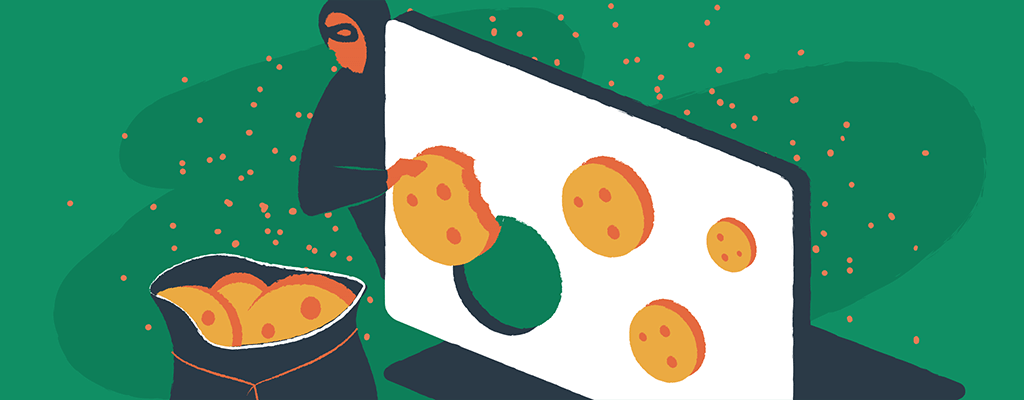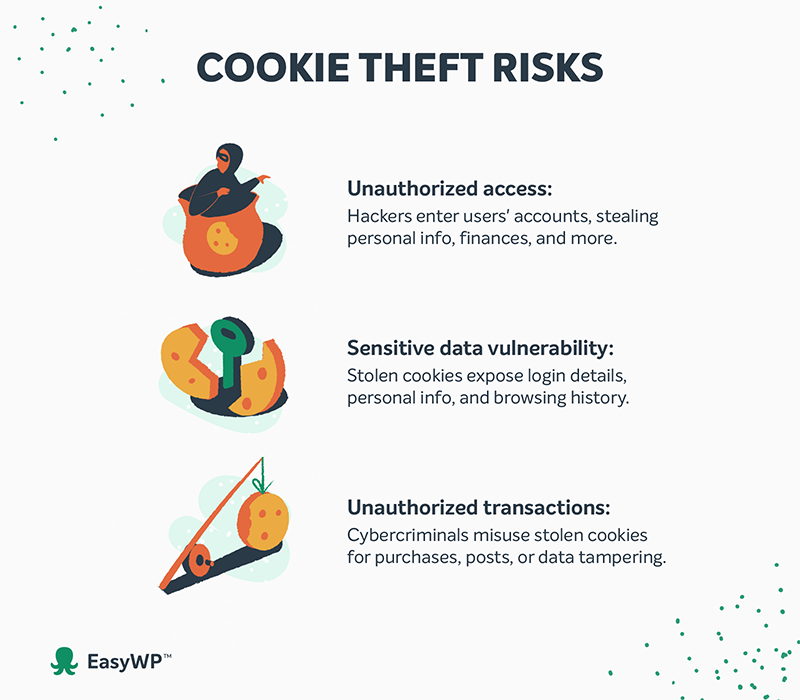Understanding and preventing cookie theft to protect your WordPress site


Cookie theft is a type of cyber attack that involves stealing cookies from users’ computers to gain unauthorized access to their data or login information. As a WordPress site owner, it is crucial to understand the risks associated with cookie theft and take proactive measures to safeguard your site and its users. Here is a helpful guide to preventing cookie theft in WordPress that will help you understand how to protect your website best.
What is cookie theft?
At its core, cookie theft is a cyber-attack where malicious actors steal cookies from a user’s computer to gain access to their data or login credentials. Cookies are small text files stored on a user’s computer when they visit a website. These cookies contain information about the user’s session and preferences, allowing websites to remember them and offer personalized experiences.

However, if cybercriminals gain access to a user’s cookies, they can exploit this information to hijack their session and access sensitive data. This is known as session hijacking, where an attacker takes over a user’s session to gain unauthorized access to a website.
How are cookies stolen?
Cybercriminals employ various tactics to steal cookies from unsuspecting users. Here are some common ways cookies can be stolen:
- Cross-Site Scripting (XSS) attacks – attackers inject malicious code into a website, which then executes in the user’s browser and steals their cookies. This is one of the most prevalent methods of cookie theft.
- Phishing attacks – creating fake websites or emails that mimic legitimate ones, tricking users into entering their login credentials or other sensitive information. Attackers can then use this information to steal cookies from the user’s browser.
- Exploiting vulnerabilities – attackers can exploit vulnerabilities in website software, such as an out-of-date WordPress theme or popular plugin, to install malware that steals cookies from users who visit the site. This method can have a significant impact, potentially affecting many users.
- Man-in-the-Middle (MITM) attacks – attackers intercept communication between the user’s browser and the website, allowing them to steal cookies or other sensitive information. This type of attack often occurs on unsecured Wi-Fi networks in hotels, airports, and coffee shops.
- Trojan malware – a type of malware that can give attackers access to a user’s computer, enabling them to steal cookies and other sensitive data. Trojans are commonly spread through email attachments or infected downloads.
With so many methods of cookie theft, it is crucial to understand the dangers they present to you, your WordPress site, and its visitors.
The dangers of cookie theft
Cookie theft poses significant risks to online privacy and security. By stealing a user’s cookies, cybercriminals gain unauthorized access to their online accounts, potentially leading to various consequences, including these:
- Unauthorized access – cybercriminals can gain access to a user’s online accounts without permission, enabling them to steal personal information, financial data, or intellectual property.
- Vulnerability of sensitive data – cookies often contain sensitive information such as login credentials, personal details, browsing history, and more. Once these cookies are stolen, the data becomes vulnerable to being accessed and used by cybercriminals.
- Unauthorized transactions – once cybercriminals gain access to a user’s online accounts through cookie theft, they can perform unauthorized activities. This can include making purchases using the user’s credit card, posting inappropriate content, or tampering with important data.
To mitigate these risks, it is essential to take proactive steps to prevent cookie theft and protect your WordPress site and its users.

Preventing cookie theft in WordPress
Protecting your WordPress site from cookie theft requires a proactive approach to website security. By implementing the following measures, you can minimize the risk of session hijacking and ensure the safety of your site and its users:
1. Install a firewall
One of the most effective ways to defend against session hijacking attacks is by installing a firewall on your WordPress site. A firewall, such as MalCare, can detect and block malicious traffic, filtering out requests that exploit vulnerabilities in your website’s code. MalCare monitors incoming traffic, detecting suspicious behavior or patterns related to session hijacking attacks. It enforces security policies and rules to prevent session hijacking, such as blocking requests with suspicious session IDs or unauthorized access to sensitive resources.
2. Use SSL encryption
Secure Sockets Layer (SSL) encryption is essential for protecting sensitive information, including cookies, from interception or theft. By encrypting the data transmitted between the user’s browser and the server, attackers will find it extremely difficult to steal such data. Ensure that your WordPress site uses HTTPS to secure your users’ sessions. Free SSL encryption is included with most EasyWP hosting plans.

3. Implement Two-Factor Authentication (2FA)
Incorporating Two-Factor Authentication (2FA) as an additional security measure for user accounts can significantly enhance the overall security of your WordPress site. 2FA requires users to provide a second form of identification along with their username and password, adding an extra layer of protection against unauthorized access. Wordfence is an excellent WordPress plugin that makes adding 2FA to your site very easy.
4. Enforce strong password policies
Encourage users to create strong, unique passwords and implement policies requiring regular password changes and meeting specific complexity requirements. Strong passwords prevent unauthorized access to user accounts and protect sensitive information.
5. Keep software up-to-date
Regularly update your WordPress core, themes, and plugins to minimize the risk of vulnerabilities being exploited by attackers. Outdated software can be a significant security risk, as cybercriminals often target known vulnerabilities to steal cookies and other sensitive data. Check our detailed guide to keeping your WordPress site updated.
6. Educate users and admins
Ensure that all users, especially those with administrative privileges, understand the risks associated with session hijacking and the steps they can take to prevent it. Educate users about the importance of strong passwords, avoiding suspicious links or downloads, and practicing safe browsing habits.
Staying ahead of cookie theft
Cookie theft is a significant security threat that can compromise sensitive user data and site functionality. As a WordPress site owner, it is crucial to understand the risks associated with cookie theft and take proactive measures to protect your site and its users. You can significantly reduce the risk of session hijacking by implementing security measures and educating everyone on your team.
With these preventive measures in place, you can safeguard your site from the dangers of cookie theft and ensure the privacy and security of your users. We also recommend exploring our other articles dedicated to WordPress security for more in-depth insights into bolstering your WordPress site’s security.
